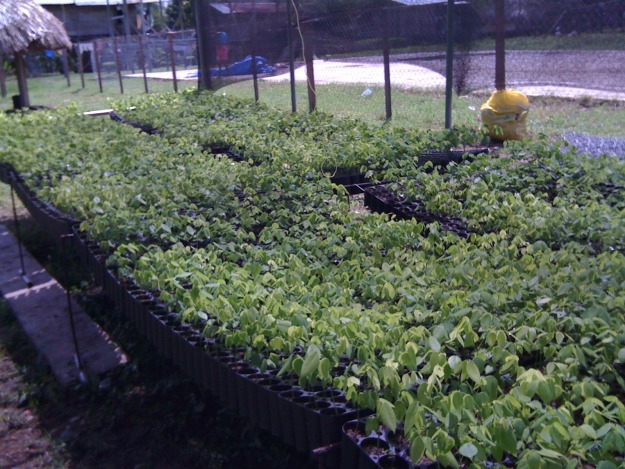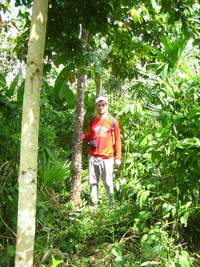 Cocobolo saplings growing in Arimae's nursery
Cocobolo saplings growing in Arimae's nursery
This morning I pulled my old hiking boots out of the closet and brushed off the residual clumps of dirt. After a few years of wearing them down to Panama, they’ve given in to the humidity and now require regular applications of Shoe Goo to keep the soles on. I should probably just get another pair, but I’m hoping they’ll make it through my next trip.
Next week we begin the planting of five hectares (12 acres) of mixed tropical hardwood trees in our partner community of Arimae. This is the first planting we’ll have done since 2008 and represents a big momentum boost for us as we continue to grow the business.
Besides bringing our planted area up to over 60 acres, this planting contributes to one of our main goals as a company: promoting community forestry as a sustainable economic alternative. As part of a UNDP-GEF Small Grants project in 2009, we helped Arimae set up a community-owned native tree nursery to sell saplings to forestry businesses like us. For this planting they’ve agreed to sell us spanish cedar, spiny cedar, zorro and cocobolo saplings raised from seed collected from their rainforest reserve and surrounding areas. It’s a positive development for the community, and we’re hopeful that the trees will meet or exceed the quality of the ones we’re buying from more established suppliers.
While we’re only buying about ⅓ of the stock from Arimae, they have the potential to become our biggest supplier of native tree saplings.
The land is prepped, the stakes are ready, we have the fertilizer, and the saplings are on their way. Now, all we need is steady rainfall and a couple weeks' worth of hard work to get them planted. In my opinion this is the most rewarding aspect of what we do. Growing the business here in the US is exciting and rewarding, but it doesn't provide the same tangible sense of accomplishment that I get from putting trees into the ground, getting the hands dirty and building relationships with our partners.
I'll capture as many photos and videos as I can during the planting and upload them to our Facebook and Twitter accounts. Not sure how often I’ll be able to do this—internet access tends to be spotty in the campo—but keep an eye out for updates!





